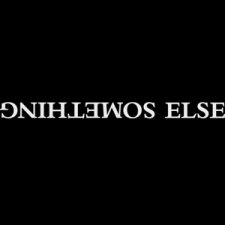Nonfiction On-screen
When The Minutes Tick Away: “The Fits” Film Review
Somewhere along the way I lost count. At some point I just began to…see. Floating maybe, I became totally suspended in the dangerous and eerie world called The Fits. The Fits is a coming-of-age story that follows a 11-year old tomboy, Toni (Royalty Hightower), as she navigates rituals of adolescence in Cincinnati. She migrates from […]
Somewhere along the way I lost count. At some point I just began to…see. Floating maybe, I became totally suspended in the dangerous and eerie world called The Fits.
The Fits is a coming-of-age story that follows a 11-year old tomboy, Toni (Royalty Hightower), as she navigates rituals of adolescence in Cincinnati. She migrates from the well adjusted punches in the male-predominated boxing ring, to her new role as dancer in an all-girls dance team, The Lionesses. But before a big competition, a physical plague erupts – the girls writhe, attacking the air, seemingly overwhelmed with the extremeness of their dance combinations; and one by one the town, and its sharp dancers, are unhinged. If this sounds too scary, don’t worry: the dancers who suffer “the fits” recover after a day or two, but the fits makes its way across the team.
The opening image is simple and remarkable: an introduction to Hightower’s deep eyes, as she completes a set of 23 sit ups. Her face wading in and out of the still frame. Hearing her count up the number of situps, the number of seconds, presumably passing by in real-time, I found myself counting along with her – a former young Black boxer myself, and personal lover of the sit up. The counting set the stage for a very different kind of movie experience. More on this later.
Toni’s counting could also be seen to represent the number of things running through her head – but we will never know. Our leading lady has very little dialogue. That space is taken up by two of Toni’s confidant’s: Jermaine (Da’Sean Minor), her brother and boxing partner, and Beezy (Alexis Neblett), her newfound friend on the dance team. All the actors play their parts well – and Beezy is joyful and laugh-out-loud funny. The film doesn’t play up any antagonism between Toni and Jermaine, nor do Beezy and Toni find themselves in a drama-filled competition with one another. Instead, Jermaine offers support for his sister’s pursuit of the dance team, and Toni pierces her ears by Breezy’s side.
These characters exist, in a similar way that our own friends might: they exist on the periphery of our personal consciousness’. Try as we might, our loved ones do not share head nor body space with us, and at the end of the day we are left alone – thoughts ringing against the one skull we have. The film is isolating in this way, with a good portion of images closing in or around Toni’s face as she sky-gazes; closing in or around Toni’s body as she shadow boxes or whips her head around; following Toni as she peeks in on teenage flirtations and gossips. We never see Toni’s home. Not one parent of her’s, and we just get a glimpse of a cell phone. Boxing gyms, dance spaces, and locker rooms are really the films only locations.
The clear point-of-view the film takes helps tremendously in building Toni’s character – after all, she’s an observer to some degree, and we, the audience are too. Cinematography by Paul Yee is perfect, and completely melded to the rest of the film. One of my favorite scenes is when Beezy and Toni sneak after-hours at the recreation center and try on their parade outfits – they shimmer so well, and Yee captures the two brown girls as (if they were) dreams.
In this same sequence, the score, by Danny Bensi and Saunder Jurriaans, creeps in, hinting maybe at the wish of the two friends to slow the passage of time between them – that very instant when a novel thing becomes familiar. The score on the whole, is unlike anything I have ever heard in a movie. Certainly nothing I would expect of a coming of age film, but then again these films are perfect places to bend and pull from many worlds and conventions. They can be magical: seeing as the focus is on younger, more prone to the fantastical, people. The soundscape becomes another world-building device, and it echoes this genre expansion. The unknown is always creeping around the corner – with flutes and strings and dissonant horns. It’s all jazz, the soundtrack. John Szwed, in a biography of Billie Holiday, writes, “Jazz was not a thing…but a method, a way of styling music.” Bensi and Jurriaans are super dope. The employment of the music is so that there were times I had to check myself, like: I’m not watching a horror film, right? There is no mystery at the end here…right?
When I left the Ritz at The Bourse Theater, I felt hazy. The first thing I did at the credits was check the time on my phone. I thought, the movie’s over? I had no idea what time it was. Disoriented, I tried playing the movie back in my head. Toni felt as distant from my mind – she had been so quiet. But then I thought, maybe this isn’t so much a flaw. It’s interesting, for sure. Her characterization, the music, the movie as a whole, is linked to my experience of time and during, and especially after, the viewing. It was uncomfortable. But it reminded me of the uncomfortable machine film already is, as a device of manipulation. Film almost feels like magic, the way we surrender ourselves to a time experience that seems like the time experience. Certain tropes, effects, and storylines, steady or rush our heartbeats, control our breathing, and take us out of our own real-lived time in ways that are predictable – we go back to the movies because of this; and when the movie ends we are put gently back in our rhythms. The movie becomes a part of our rhythm – the big Hollywood ones, at least. I think of Ava DuVernay’s “Middle of Nowhere,” and while that film has much more room for exploring – 100 compared to the 70 minutes of The Fits – it plays with plot and character in similar ways, particularly the ending. The plot work is not signaled as event-event-event-closure, but rather a more fluid track that may end at any time. What we’re allowed to see is just a point in the character’s life, an intimate portrayal of a Black woman. Ava’s direction makes that clear: you’re not there for the entire character’s life. Many films, like big summer superhero blockbusters, like to trick us into thinking we are – that we gain a sort of completion and know-all.
The Fits makes you hyper aware of things not seen, of words unsaid. A Summertime movie is not supposed to be like this: summertime is where white young everybody’s fall in love, where the buff men blaze in glory and set the world, and our audience experience, right again. But not here – no. The Fits disrupts the qualia of what a film can feel like.
I’m with Nijla Mu’min, who reviewed the film for Shadow and Act, when she wonders what this movie would have been like were it directed by a Black woman. And I commend the collaboration that was cultivated between first-time feature Director/Screenwriter/Story Constructor, Anna Rose Holmer, Story Constructor/Editor, Saela Davis, and Story Constructor/Producer Lisa Kjerulff.
Cinema can be a kind of witch-work; Royal Hightower conjures a deep performance; and on the whole, The Fits is a kind of magnificent unsettling.

-1200x675.jpg)




